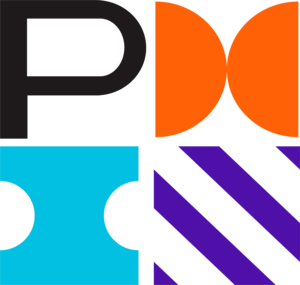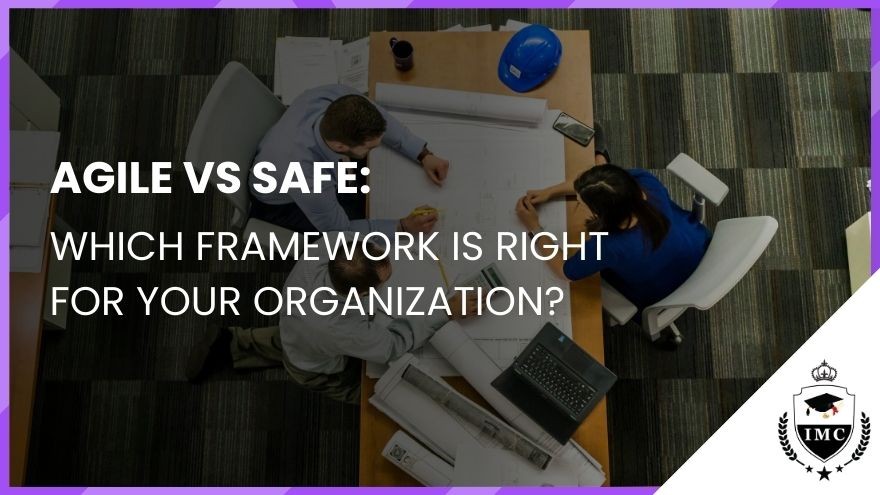In the ever-evolving landscape of project management, organizations continuously seek efficient methodologies to adapt to changing requirements and deliver value faster. Two prominent frameworks that have gained significant traction are Agile and the Scaled Agile Framework (SAFe). Both frameworks emphasize flexibility and iterative progress but serve different purposes and organizational structures. This blog post will delve into the differences between Agile and SAFe, helping you determine which framework is right for your organization. We’ll also explore how IMC Institute can support your journey with SAFe Scrum Master Certification and PMP certification accredited by PMI.
Understanding Agile
Agile is a mindset and set of principles aimed at improving collaboration, flexibility, and customer satisfaction. It encourages teams to work in short cycles (sprints), allowing them to continuously refine their products based on stakeholder feedback. Agile methodologies, such as Scrum, Kanban, and Extreme Programming (XP), enable teams to respond to changes quickly, promoting innovation and efficiency.
Real-World Example of Agile
Spotify is a notable example of an organization successfully implementing Agile principles. The company uses a unique model where teams are organized into squads, each responsible for a specific feature or aspect of the product. Squads operate autonomously, allowing for rapid decision-making and innovation. Spotify's commitment to Agile has enabled it to adapt to user feedback quickly, continuously improving its platform while maintaining a focus on customer satisfaction.
What is SAFe?
SAFe, or the Scaled Agile Framework, builds on Agile principles but is designed for larger organizations that require alignment across multiple teams. SAFe incorporates Agile practices at scale, allowing organizations to synchronize the work of various teams towards a common goal. It provides a structured approach with defined roles, responsibilities, and artifacts, ensuring that all teams are aligned and focused on delivering value.
Real-World Example of SAFe
Cisco, a global leader in technology solutions, adopted the SAFe framework to improve its software development processes. By implementing SAFe, Cisco was able to synchronize work across multiple teams, improving collaboration and transparency. This structured approach helped the organization reduce time-to-market for its products while enhancing quality and customer satisfaction. The successful implementation of SAFe allowed Cisco to pivot quickly to changing market demands, reinforcing the importance of agility at scale.
Key Differences: Agile vs. SAFe
1. Scope and Scale
- Agile: Primarily focuses on small, cross-functional teams working on individual projects. It's ideal for organizations looking to implement Agile methodologies within specific teams or departments.
- SAFe: Designed for large enterprises with multiple teams needing alignment. It scales Agile practices to fit the entire organization, facilitating collaboration across various departments and functions.
2. Structure and Framework
- Agile: Offers flexibility and encourages teams to adapt their processes as needed. There are no strict guidelines, allowing teams to find what works best for them.
- SAFe: Provides a comprehensive framework with specific roles, responsibilities, and ceremonies. This structure ensures that all teams are aligned with the organization's strategic objectives, promoting collaboration and transparency.
3. Implementation Approach
- Agile: Typically implemented by individual teams, allowing for a bottom-up approach. Teams can adopt Agile practices at their own pace without needing extensive organizational changes.
- SAFe: Requires a top-down approach, as successful implementation involves strategic alignment across the organization. It often necessitates training and buy-in from leadership to ensure all teams understand and adhere to the framework.
Which Framework is Right for Your Organization?
Choosing between Agile and SAFe depends on various factors, including the size of your organization, the complexity of projects, and your strategic goals. Here are some considerations:
When to Choose Agile
- Small to Medium-Sized Teams: If your organization consists of small teams working on relatively independent projects, Agile can provide the flexibility and adaptability needed to deliver value quickly.
- Rapidly Changing Environments: Agile is ideal for organizations operating in fast-paced industries where requirements can change frequently, allowing teams to pivot quickly based on feedback.
When to Choose SAFe
- Large Enterprises: If your organization is large and requires multiple teams to collaborate on complex projects, SAFe provides the structure and alignment necessary for successful delivery.
- Need for Strategic Alignment: If your organization aims to align projects with broader business goals, SAFe ensures that all teams work towards a common objective, enhancing collaboration and reducing silos.
Supporting Your Journey: IMC Institute Certifications
Regardless of the framework you choose, having the right knowledge and skills is crucial for successful implementation. IMC Institute offers the SAFe Scrum Master Certification, equipping professionals with the skills needed to navigate the complexities of Agile at scale. This certification prepares individuals to facilitate team events, understand team dynamics, and implement SAFe principles effectively.
Additionally, the PMP certification accredited by PMI provides a comprehensive understanding of project management principles, enabling professionals to lead projects successfully, whether using Agile, SAFe, or traditional methodologies. Both certifications can significantly enhance your career prospects and the overall efficiency of your organization.
Summary
In conclusion, both Agile and SAFe offer valuable methodologies for organizations looking to enhance their project management capabilities. While Agile is ideal for small teams seeking flexibility, SAFe provides a structured approach for larger enterprises needing alignment across multiple teams. Ultimately, the choice between Agile and SAFe should be based on your organization's size, structure, and strategic goals.
If you are considering adopting SAFe within your organization, explore IMC Institute's SAFe Scrum Master Certification to ensure your team is well-equipped for success. Embracing the right framework can empower your organization to thrive in today’s fast-paced business environment.






